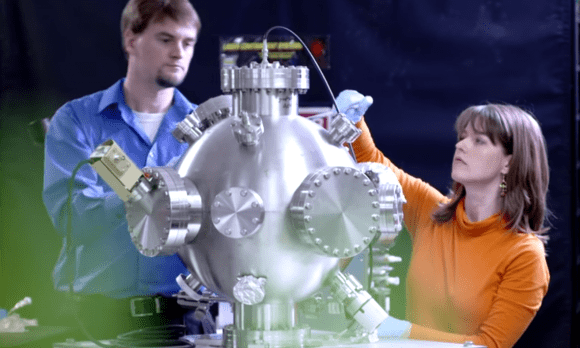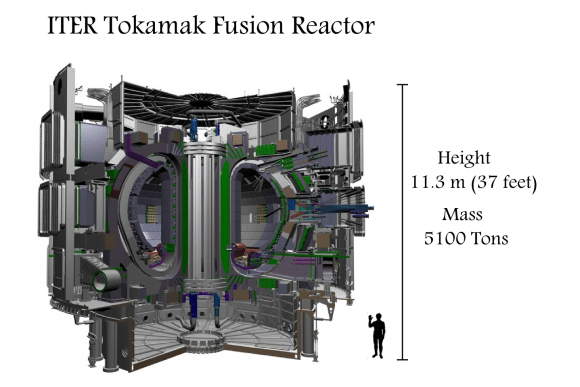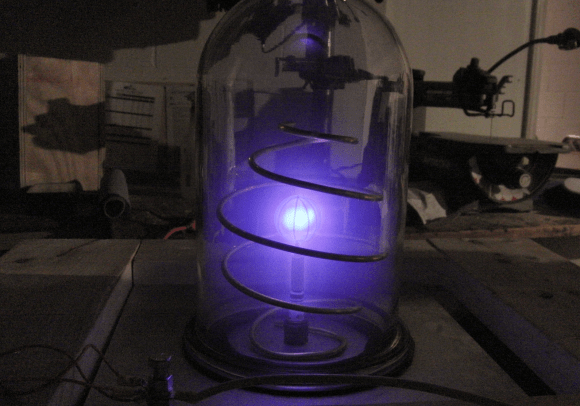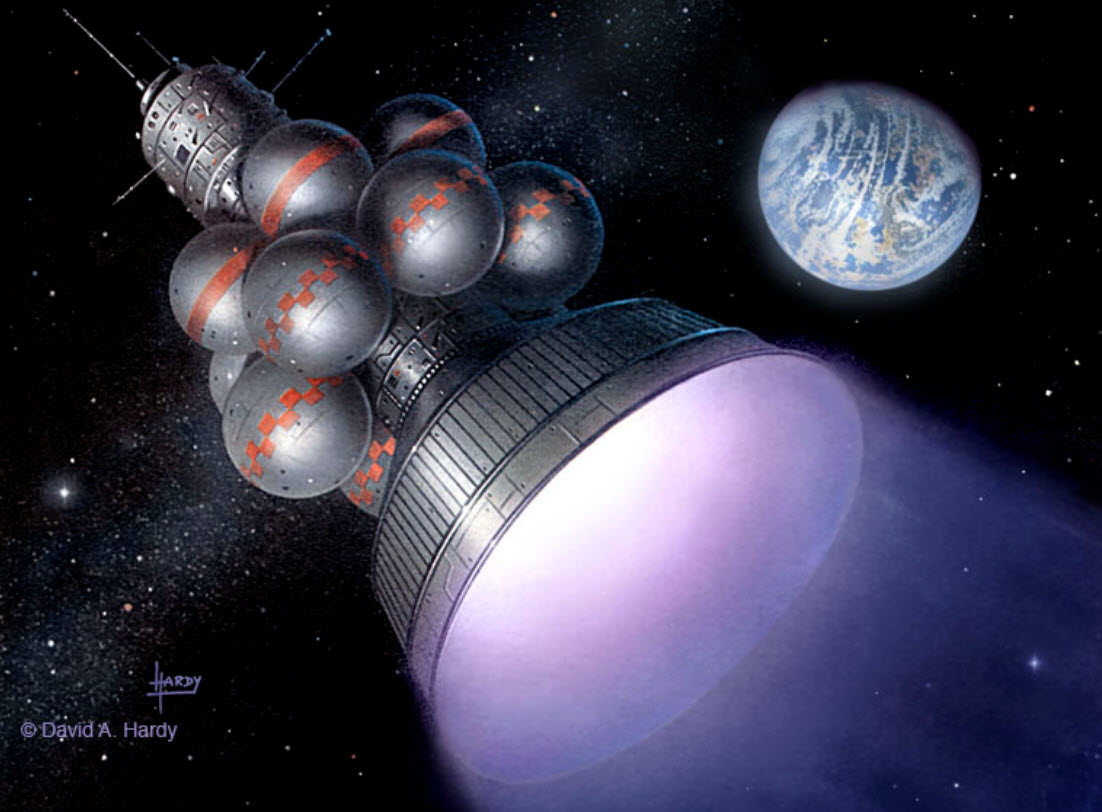The Farnsworth Fusor; Pons and Fleishmann. It seems the trail to fusion energy has long gone cold — stone cold, that is, and not cold as in cold fusion. Despite the promise of fusion providing a sustainable and safe energy source, fusion reactors are not a dime a dozen and they won’t be replacing coal fired power plants any time soon. Or will they? Lockheed-Martin Skunk Works announced a prototype compact fusion reactor that could be ready within five years. This revelation has raised eyebrows and sparked moments of enthusiasm.
But, let’s considers this story and where it all fits in both the history and future.
For every Skunk Works project that has made the runway such as the Stealth Fighter or SR-71 Blackbird, there are untold others that never see the light of day. This adds to the surprise and mystery of Lockheed-Martin’s willingness to release images and a detailed narrative describing a compact fusion reactor project. The impact that such a device would have on humanity can be imagined … and at the same time one imagines how much is unimaginable.

The program manager of the Skunk Works’ compact fusion reactor experiment is Tom Maguire. Maguire and his team places emphasis on the turn-around time for modifying and testing the compact fusion device. With the confidence they are expressing in their design and the ability to quickly build, test and modify, they are claiming only five years will be needed to reach a prototype.
What exactly the prototype represents was left unexplained, however. Maguire continues by saying that in 10 years, the device will be seen in military applications and in 20 years it will be delivered to the world as a replacement for the dirty energy sources that are in use today. Military apps at 10 years means that the device will be too expensive initially for civilian operations but such military use would improve performance and lower costs which could lead to the 20 year milestone moment if all goes as planned.
Their system uses magnetic confinement, the same basic principle behind the tokamak toroidal plasma confinement system that has received the greatest attention and government funding for over 50 years.

The International Thermonuclear Experimental Reactor (ITER) is currently under construction in Europe under the assumption that it will be the first net energy producing fusion generator ever. It is funded by the European Union, India, Japan, People’s Republic of China, Russia, South Korea and the United States. But there are cost over-runs and its price has gone from $5 billion to $50 billion.
ITER is scheduled to begin initial testing in 2019 about the time Lockheed-Martin’s compact fusion reactor prototype is expected. If Lockheed-Martin succeeds in their quest, they will effectively have skunked ITER and laid to waste a $50 billion international effort at likely 1/1000th the cost.
There are a few reasons Lockheed-Martin has gone out on a limb. Consider the potential. One ton of Uranium used in Fission reactors has as much energy as 1,500 tons of coal. But fission reactors produce radioactive waste and are a finite resource without breeder reactors, themselves a nuclear proliferation risk. Fusion produces 3 to 4 times more energy per reaction than fission. Additionally, the fuel — isotopes of hydrogen — is available from sea water — which is nearly limitless — and the byproducts are far less radioactive than with fission. Fusion generators once developed could provide our energy needs for millions of years.
More pragmatically, corporations promote their R&D. They are in a constant state of competition. They present a profile that ranges from the practical to the cutting edge to instill confidence in their Washington coffers. Furthermore, their competitors have high profile individuals and projects. A fusion project demonstrates that Lockheed-Martin is doing more than creating better mouse-traps.
To date, no nuclear fusion reactor has achieved breakeven. This is when the fusion device outputs as much energy as is input to operate it. Magnetic confinement such as the various tokamak designs, Lawrence Livermore’s laser-based inertial confinement method, and even the simple Philo Farnsworth Fusor can all claim to be generating energy from fusion reactions. They are just all spending more energy than their devices output.

The fusor, invented in the 1960s by Farnsworth and Hirsh, is a electrostatic plasma confinement system. It uses electric fields to confine and accelerate ions through a central point at which some ions will collide with sufficient energy to fuse. Although the voltage needed is readily achieved by amateurs – about 4000 volts – not uncommon in household devices, no fusor has reached breakeven and theoretically never will. The challenge to reaching breakeven involves not just energy/temperature but also plasma densities. Replicating conditions that exist in the core of stars in a controllable way is not easy. Nevertheless, there is a robust community of “fusioneers” around the world and linked by the internet.

It remains to be seen who, what and when a viable fusion reactor will be demonstrated. With Lockheed-Martin’s latest announcement, once again, fusion energy is “just around the corner.” But many skeptics remain who will quickly state that commercial fusion energy remains 50 years in the future. So long as Maguire’s team meets milestones with expected performance improvements, their work will go on. The potential of fusion energy remains too great to dismiss categorically.


This is weird. It doesn’t actually say anything other than some senior executive in Lockheed-Martin wants to sell his stock options.
It ‘s possible these guys are actually making something smart, like a Bussard polywell reactor with meson catalysis. That ring thing looked a bit like a part of a polywell. But somehow, the presentation doesn’t feel right. Anyone else get this?
Nope…didn’t get that at all. But that’s because I’m not relying on this one article for all of the information about it.
Just go to Lockheed Martin’s home page, and click “Learn more about compact fusion.”
http://www.lockheedmartin.com/us/products/compact-fusion.html
If you’ve already been there, be sure to see all the other articles at the bottom; there is much more information out there. Yes, LMCO is revealing this “early”, but it’s because they’re ready to go after government and corporate funding to do this prototyping.
Right now this is the free version of their compact fusion reactor. Pay for the full version and you will have details. 🙂 Its definitely short of details. MIT Tech Rev has a story with expert commentary.
Why not post a link?
http://www.technologyreview.com/news/531836/does-lockheed-martin-really-have-a-breakthrough-fusion-machine/
‘Tomahawk’ designs? Got to love autocorrect…
oops. thanks fur ketchup that!
Dense production of clean and safe energy in space, with no risk of radiation damage to the crewmembers, is a steady step for interstellar journeys. http://youtu.be/u8n7j5k-_G8
“Fusion produces 3 to 4 times more energy per reaction than fission.” What exactly is the basis for this nonsense? Remember E=mc2? A U-235 fission reaction releases 200 MeV; a D-T fusion reaction releases 17.6 MeV; 14.1 MeV of which is in the form of kinetic energy of a neutron. In grade school they told us that 200 was bigger than 17.6.
I can assure you that you wouldn’t want to be anywhere near an operating 100 MW D-T fusion reactor because of these neutrons and the gammas produced by nuclear activation.
A “compact fusion reactor” is an absurdity, and anyone familiar with this technology would know that. More background info on nuclear fusion is at: en.wikipedia.org/wiki/Nuclear_fusion
These Lockheed people must be delusional.
Thanks. If you consider the reactions relative to the atomic mass that’s involved then the comparison is as stated in the article. This is important for aircraft or spacecraft but not so much for a stationary power plant. Extracting, processing and working with the U is probably more trouble due to its weight besides being rarer. Isotopes of H should become pretty cheap once you have cheap fusion reactors providing cheap electricity.
I side with you and the skeptics on the chances of L-M’s design being a breakthrough. One advantage L-M has is money. These other “compact” designs have no one with deep pockets. The Feds won’t fund L-M until they show something above the norm for progress.
As far as the fusion energy, yes, a neutron which can be slowed by moderator and also has a half-life of ~15 minutes. The neutron decays into a proton (hydrogen ion), an electron and a anti-neutrino and maybe a gamma ray added. I’d have to read up more on how they plan to manage all the neutrons generated – moderated, absorbed, decay. My studies involved cold plasmas outside the realm of plasmas found in the cores of stars.
If it pans out, this might be a viable power source for VASIMR.
Yeah, on the condition that VASIMR pans out… there are people (*cough* Zubrin *cough*) who make a very very good case that VASIMR and reality can not be reconciled.
I for one am sceptical of the real world applicability of Lockheed-Matrin’s fusion concept, but they might have hit something. But VASIMIR?
And fusion will take decades to develop, no matter how optimistic Lockheed-Martin is. If you need better power than current fission reactors supply, why not use a physical principle that has already actually worked on a 7.4 MW (thermal) level? Why not develop a Thorium/LFTR reactor? And if you need efficiency (high specific impulse) for uncrewed missions, you use can “conventional” nuclear electric propulsion with evolved “conventional” ion drives. And if you need high thrust (for crewed missions), you can use “conventional” nuclear thermal. Just take what is already there and develop it further. You do not need to invent any challenging new physical operating principles to fly a spacecraft in our solar system – it’s an engineering question, not a fundamental physics question, just take what we already know and use, scale it up.
However what you need to do is make “up mass” to LEO cheaper – and for that, neither fusion nor fission will help you, nor any fancy make-believe electric drive. To make up mass cheaper, you need fully and cheaply reusable launch vehicle (*cough* Musk *cough*).
I can just see the moment it’s turned on …
http://youtu.be/Xj1CDU_wd-4
http://youtu.be/9jKc5wz3Jgw
Hopefully, this can continue to be developed without the Koch bros., who have an avowed intent to make us totally dependent on fossil fuels at least for their life-time, to find a way to minimize or squelch this so their profits are not in any way threatened with diminishment.
And so you think the Koch brothers control oil production in the world, how nieve, or worse, politcally correct in your mind. The only reason oil prices are being driven down by Saudi’s is because our quickly advancing U.S. energy independence needs to be slowed down so they can protect their oil profits, it has nothing to do with Koch brothers. Oil prices have been controlled and manipulated for decades, and if you go back in history, prices always drop when new exploration or alternative energy sources are disclosed.
LM should be encouraged, not attacked by all the naysayers on fusion development, and why are there naysayers, because once again the powers that be want to control fission remains dominant energy source. Why else was P and F attacked when they were forced by university of UT released their results and labeled it cold fusion. It is all about greed, and God forbid if grant money faucet was cut off and then redirected to cold fusion research. These attacks on cold fusion have been obvious for decades, and sadly, has slowed progress if not destroyed future research, so good for LM for developing a safer and more efficient energy source. And you think the Koch brothers are controlling oil industry, hardly a main player in price controlling.
The spacecraft picture puzzles me. One assumes there is a fusion reactor on board. How does it generate thrust?
Cf. nuclear thermal rocket and nuclear electric rocket.
That appears to the an image of the proposed Project Daedalus starship which is performance wise probably the goal of fusion rocket research taking place now. Daedalus was to generate thrust through a very quick series of fusion micro explosions. You can read about it here: http://en.wikipedia.org/wiki/Project_Daedalus
This isn’t news, it’s a press release. There is no evidence that this is anything other than vaporware. No evidence that they’ve solved any of the problems that other methods have encountered. Let us know when they prove anything.
Absolutely right!
“It seems the trail to fusion energy has long gone cold” – Please see the current list of fusion projects. There are many credible non-cold fusion, non-tokamak projects: http://nextbigfuture.com/2014/10/updated-prospects-for-commercial.html.
This article was far below the (usually high) science level of Universe Today. The author should really research the topic instead of hunting puns on cold fusion.
The author might learn a lot from reading an insider’s view on the Lockheed announcement. http://thepolywellblog.blogspot.de/2014/10/lockheed-blew-it.html It tells why this is not just funny or curious as it looks for people who only know about cold fusion and ITER.
Mind you, it was just one pun on cold fusion. I reviewed your two sources (links). I would recommend these to readers, too. The Polywell Blog article – “Lockheed Blew It” is in line with the skepticism that experts are expressing. The Blog article explains how it negatively impacts the quest because of how little information was released and the means it was released. There is not “a lot” to learn from the blog article but it emphasizes how it damages the prospects for funding others that are maybe more legitimate.
I’ve now read some of the other articles on the net and mine fits fairly among them. Universe Today approaches science news from various angles. There are a number of writers. Some stories delve into details while others are more straight news. As the Blog article and for example, MIT Tech Review states, there isn’t a lot of detail. I’d agree that it could be damaging especially if L-M suddenly receives explicit government funding and then fails. So my story worked with what little info was there, compared it to the high profile projects, expressed skepticism, played with it a bit, but left it to – lets see what they do – and that potential of fusion is too great to dismiss even after 60 years of trying. For those concerned that L-M’s will damage the “community”, my article doesn’t raise people’s hopes.
My impression with “nextbigfuture” is that the people writing there are “a bit” overoptimistic and undercritical with regards to scientific and technological claims, to put it mildly. And instead of writing clear articles, they dump countless mildly on-topic illustrations and technical details into their articles – to paraphrase W.C. Fields, the motto at “nextbigfuture” seems to be: “If you can’t dazzle them with concise writing, baffle them with irrelevant details.”
So if anybody leads their argument with a “nextbigfuture” article (that is in best “nextbigfuture” filled with countless more or less irrelevant details instead of clearly arguing a point), my BS meter goes off wildly… and then the claim that the “science level” here is low, after having mentioned “nextbigfuture”, now that has something comical to it.